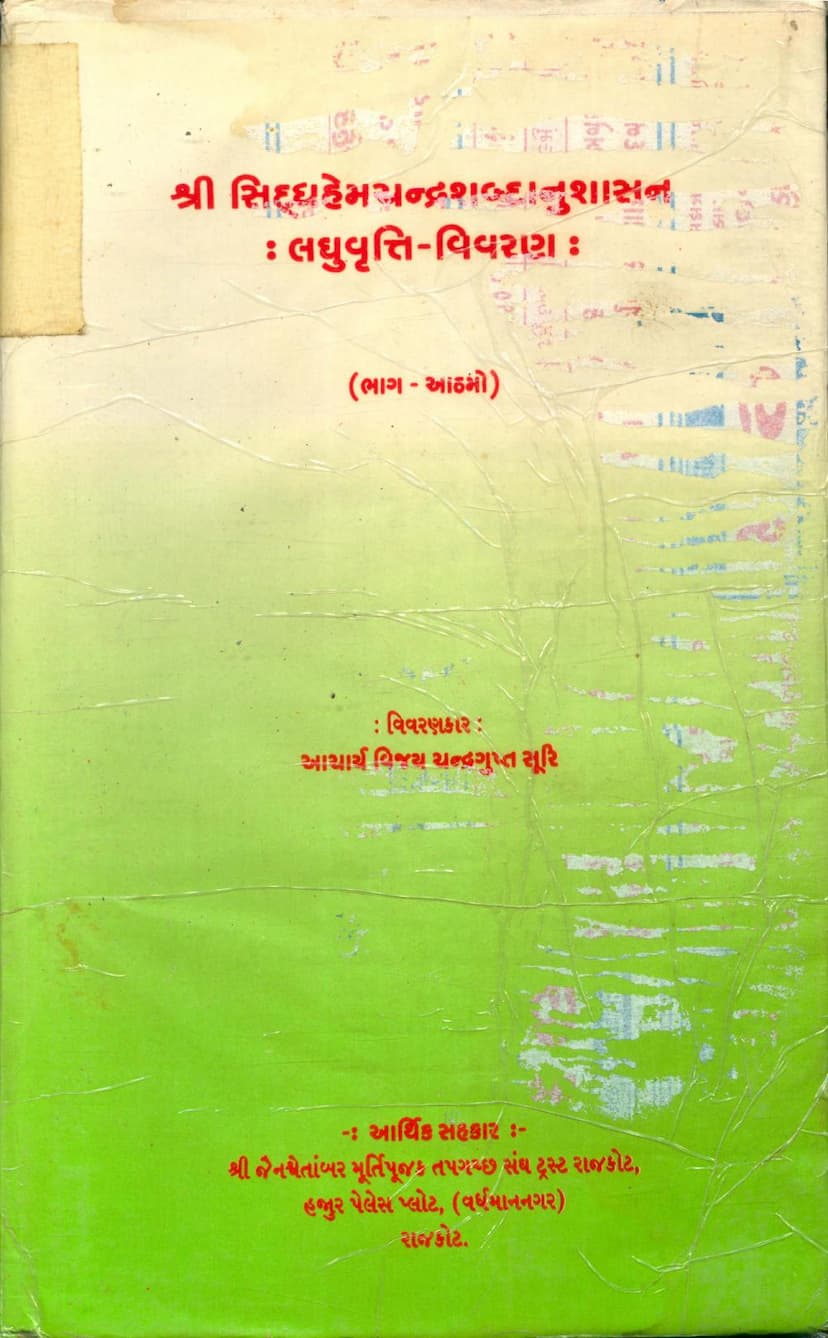Siddhhemchandra Shabdanushasan Laghuvrutti Vivran Part 08
Added to library: September 2, 2025

Summary
The provided text is Volume 8 of the "Siddhhemchandra Shabdanushasan Laghuvrutti Vivran" (Sidhhhemchandra Shabdanushasan - Commentary for the Lesser Ones), authored by Acharya Vijay Chandragupta Suri. This volume is dedicated to explaining the grammatical rules of the Siddhhemchandra Shabdanushasan, a highly influential Jain grammar text composed by the renowned scholar Hemchandracharya.
The work is a commentary (Vivarana) on the Laghuvrutti (a shorter commentary) of the Shabdanushasan. The author, Acharya Vijay Chandragupta Suri, acknowledges the profound scholarship of Hemchandracharya and expresses gratitude for the opportunity to delve into such a significant work. He mentions that his own study of grammar began under the guidance of Pandit Triptinarayan Jha, who wrote a Hindi commentary for his convenience. This Gujarati commentary primarily builds upon that Hindi explanation, incorporating necessary corrections and additions.
The author also touches upon a critical point from the preface of the first part, where a commentator had attempted to point out an 'error' in the original grammar. Acharya Chandragupta Suri expresses disapproval of such approaches, especially when they come from individuals who disregard the authority of Jain Tirthankaras, Ganadharas, and previous Acharyas. He believes that those who consider themselves superior scholars should strive to create their own grammar rather than criticizing established works. He contrasts this with a non-Jain scholar who, despite being an expert in other fields, was deeply impressed by Hemchandracharya's grammar and the erudition of Jain Acharyas. This, the author suggests, highlights the need for immense punya (merit) not only to become an Acharya in Jainism but also to recognize and appreciate their greatness.
He reiterates another important point from the first part's preface: the impropriety of Jain lay followers (shravakas) making a living by teaching monks and nuns. While acknowledging that this might be a last resort if other livelihood options are unavailable, he still considers it incorrect and hopes this commentary will not be misused in such a manner.
The bulk of the text from page 6 onwards consists of detailed grammatical explanations of specific Sanskrit sutras from Hemchandracharya's Siddhhemchandra Shabdanushasan. Each sutra is presented, followed by a commentary (Vivarana) that explains its meaning, application, and grammatical nuances. The explanations involve intricate details of Sanskrit morphology, including the application of suffixes (pratyayas), the changes in word forms due to various rules (agama, adesha, lopa, vruddhi), and the specific contexts in which these rules apply. The commentary cites other relevant sutras and grammatical principles to clarify the explanations. The sutras covered in this volume deal with various aspects of Sanskrit grammar, particularly focusing on the formation of words and their grammatical properties, often within specific semantic contexts like meaning-derivation (arthavivakshaa), agent (kartṛ), and possession (svaartha).
The text includes numerous sutra numbers (e.g., 7|1|1, 7|1|2, 7|4|68) and references to other parts of the grammar or related texts (e.g., Brihadvrutti). The explanations are highly technical and aimed at advanced students or scholars of Jain and Sanskrit grammar. The language is primarily Gujarati, with Sanskrit terms and sutras used throughout.
The overall tone is scholarly and devotional, reflecting the importance placed on understanding and preserving the grammatical tradition within Jainism. The detailed breakdown of each sutra, with its exceptions and specific applications, demonstrates a commitment to thoroughness and accuracy in linguistic analysis.